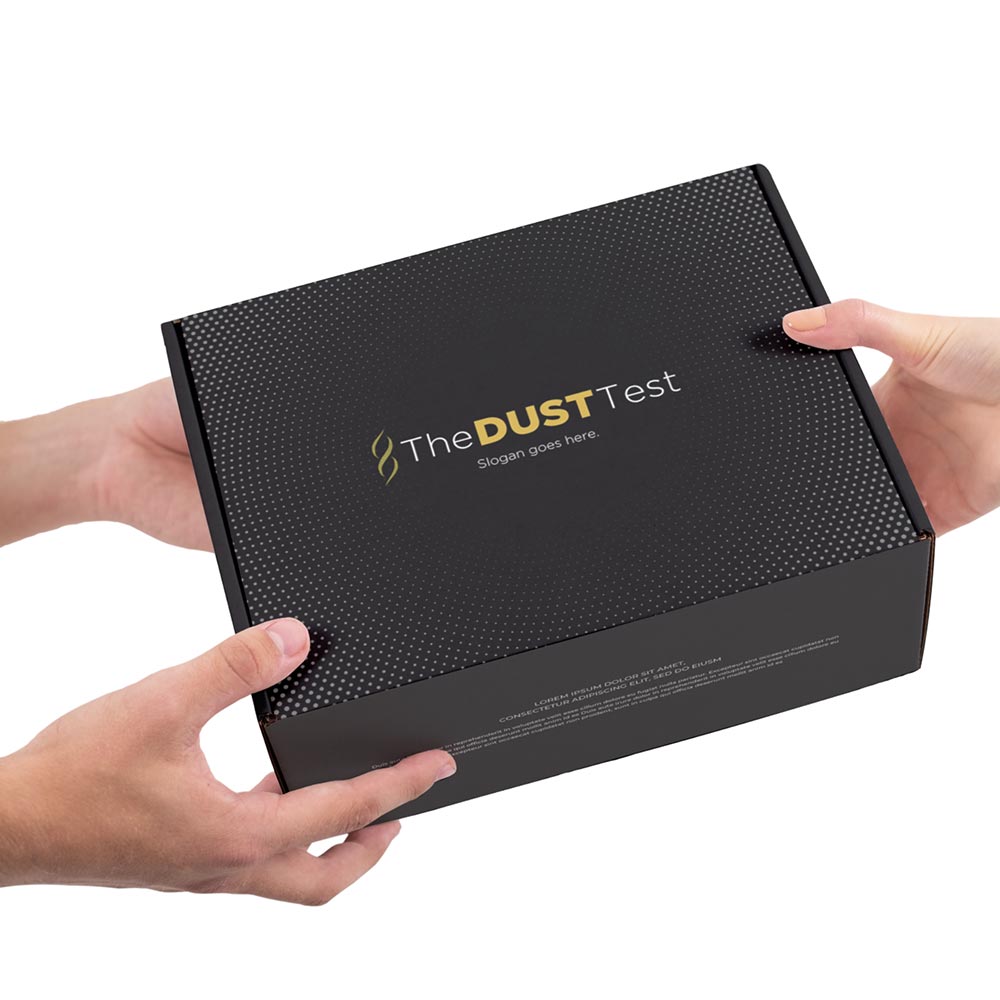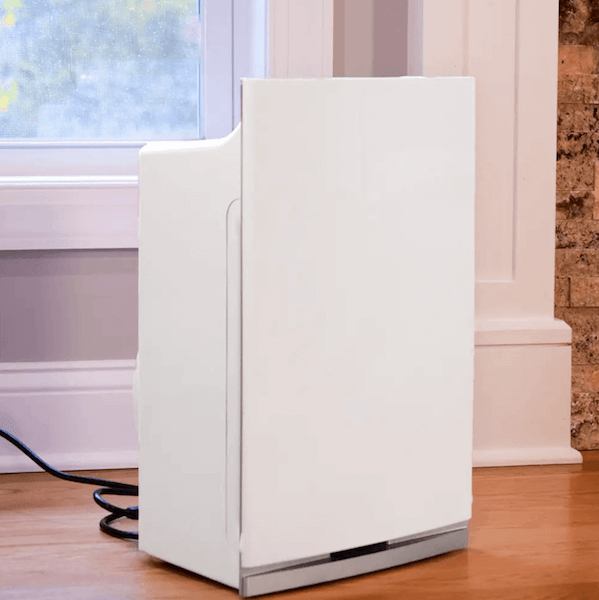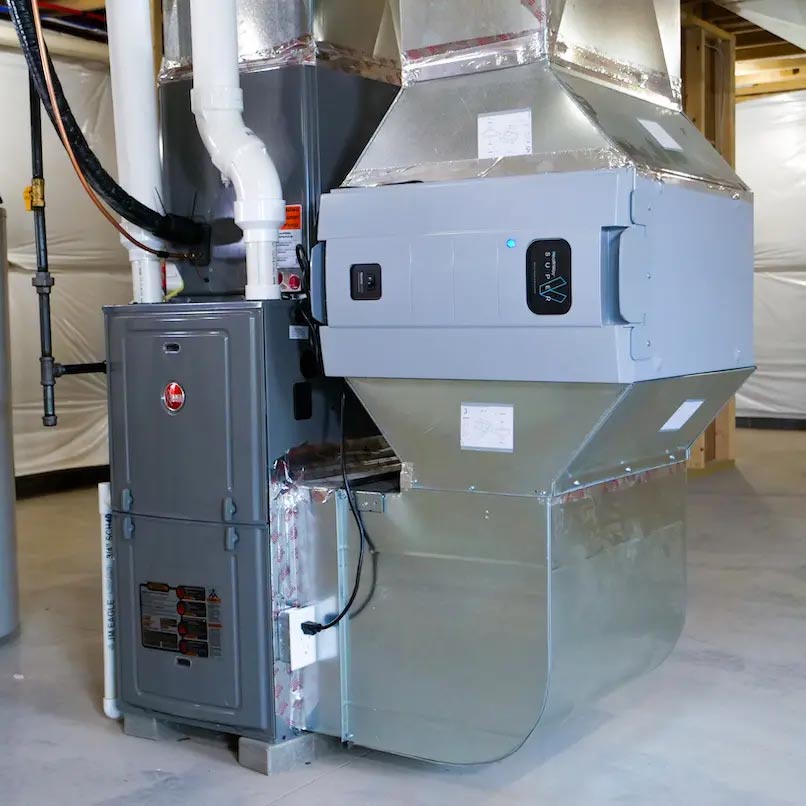No one wants their home to be known as “the dusty place” that makes everyone sneeze. Having a constant layer of grime isn’t just icky; it can lower the indoor air quality of a home. Every time the dust is disturbed, microscopic particles get kicked into the air and can make their way into our bodies. The more dust there is, the more airborne particles there will be. That’s why it’s important to actively work to reduce dust in a house!
Knowing how to identify the cause of excess dust and how to tackle it will improve the quality of the air we breathe and keep your home sparkling clean.
Where Does Dust Come From?
Dust is essentially a layer of combined particles from indoor and outdoor sources. Some of the common culprits include skin cells, pollen, dirt, pet dander, and more. Over time, these particles build up and form that staple layer of visible “stuff” on the surfaces throughout your home.
A great way to think about it is a house that hasn’t been lived in for some time. The longer it goes undisturbed, the more these particles are allowed to build up. Our indoor environments would look the same if we didn’t actively take steps to reduce dust in a house.
Why You Should Reduce Dust in a House

Gravity brings particles like mold spores, mycotoxins, and endotoxins down to horizontal surfaces like floors, doorframes, and furniture. So basically, where dust collects, so do these indoor contaminants.
The more dust there is in a home, the more of these microscopic particles there are as well. When this layer of particulate matter gets kicked up into the air, it will lower the indoor air quality of the space and allow contaminants like mold spores, mycotoxins, and bacteria to enter our bodies through inhalation.
The longer someone spends inside an indoor environment with particle-filled air, the greater the level of exposure they will face. This can trigger a long list of potential adverse health reactions, which is why it’s important to reduce dust in a house.
Is Your Dust a Health Hazard?
Determining if there’s a problem that needs to be addressed can be the difficult part. The particles themselves are microscopic, making them invisible to the naked eye. And not all microbial growth is apparent. It can be hidden in places like behind the wall or inside the HVAC.
The Dust Test

That’s where The Dust Test comes into play. This kit can help determine if there are high levels of contamination within a home before you spend lots of money trying to find one (both medically and in the indoor environment).
Here’s how it works: Again, microscopic contaminants will collect where dust collects. Testing and analyzing indoor dust will help determine what’s hanging out in your home. If there are high levels of contamination, you can use the results as the foundation for the next steps of the process.
The data collected will create a roadmap for the inspector and give you the ability to say, "Please help me find where these contaminants are coming from." From there, the remediation team should have all the information needed to properly remove all of the sources of contamination in the home and ensure it’s a healthy space.
If there are no high levels of contaminants, you will have peace of mind knowing that your indoor environment is safe.
Why is My House So Dusty So Fast?
A house that gets dusty quickly could be due to issues like mold growth, not cleaning often enough, dirty air filters, or poor air filtration. Let's dive into why these make your home dusty fast.
Microbial Growth

When mold growth occurs, it releases microscopic spores into the surrounding area. These will attach to dust and settle on horizontal surfaces, adding to that visible layer of “stuff.” The longer the colony is present inside, the more spores it will release, increasing the particle count inside and polluting the indoor environment. Some species of mold can also create microscopic toxins called mycotoxins, further contributing to the level of particles. Finally, bacteria can often be found growing right alongside dust, adding to the contamination present.
Infrequent Cleaning and/or Using Wrong Cleaning Products
We can’t exactly put a bubble around our houses, so particles like dust, allergens, mold spores, and mycotoxins will inevitably blow inside. It’s up to us to actively work to keep particle levels low. Lack of cleaning or using cleaning products that do not actually remove particles from a surface allows that layer of dust to build up over time.
Dirty Air Filters
Air filters are the first line of defense for the HVAC system and indoor air. They help eliminate dust and contaminants so that they don’t continue to circulate throughout the indoor space. If they’re past their time to be replaced, chances are that they’re packed full of all sorts of particles. This will affect their ability to filter, leading to increased levels of particles like dust and lower indoor air quality. It can also put a strain on the HVAC system as it works overtime to pull air through the clogged filters.
Poor Filtration From the HVAC System
If the HVAC is not cycling the air in your home, it’s not actively eliminating particles like dust, allowing them to continue to build up inside. This could be from improper maintenance or a system that is not equipped for the home.
How to Reduce Dust in a House

There are a ton of things you can do to reduce dust in a home, including cleaning and focusing on air purification. Actively working to reduce dust in a house will not only promote healthier indoor air quality but also reduce the opportunities for microbial growth to develop.
As the saying goes, “An ounce of prevention is worth a pound of cure.”
Clean Frequently
Set up a daily, weekly, monthly, and seasonal cleaning schedule to keep your home as dust-free as possible.
Use a damp microfiber cloth on surfaces throughout the home. Microfiber cloths are an invaluable power tool when it comes to cleaning homes and eliminating tiny particles from your space. In fact, they are 100 times more effective than regular rags at wiping away microscopic particles.
Another great option for removing dust is a HEPA vacuum cleaner, particularly for porous surfaces. To reach the EPA standard and be qualified as a HEPA filter, they must filter out 99.7% of particles that pass through that are 0.3 microns in size. That means that these machines can remove dust as well as other small particles like mold spores.
Finally, wash all porous items with a botanical laundry additive like EC3. This will help remove microscopic particles from the surface so they don’t continue to build up. Plus, this is an incredibly simple process to reduce dust in a house!
Don’t Forget to Deep Clean
Ultimately, the goal is to clean as deeply and thoroughly as possible to reduce dust in a house. Make sure to tackle all of the spaces that don’t get a ton of attention during regular cleaning. This can include the tops of door frames, cabinetry, wall decor, storage areas, behind kitchen appliances, and all of the hard-to-reach places. Essentially, focus on anything that’s not often seen because these can collect a layer of dust over time.
HomeCleanse offers customized packages to meet all of your cleaning needs, especially for that ultimate deep clean. These carefully crafted kits are packed full of products that will help you succeed on your home health journey. Those of us at HomeCleanse stand by and use each and every one of these tools to create safe indoor environments for our clients.
HomeCleanse Shop
Invest in Air Purification
Air purifiers are a phenomenal way to reduce dust in a house. These powerful machines help to remove airborne particles like dust so that they’re not circulating through our indoor spaces and making their way into our bodies. Not all air purifiers are built the same, though. You want to go with a unit that removes the maximum number of contaminants possible.
We suggest Intellipure products. Their purifiers utilize their patented DFS technology to remove up to 99.99% of particles as small as 0.007 microns. Whether it’s particulate matter from wildfires or mold spores, these purifiers are equipped to filter them from your air.
The best option is to invest in a whole-home air purifier. These systems are installed at the home’s point of entry and will effectively remove contaminants from the air so that the HVAC system can run efficiently. This filters out particles for the entire home, eliminating the space requirements that smaller units have. As an added bonus, they also offer a layer of protection for the HVAC itself by eliminating contaminants before they enter the system.
Bonus Tips to Reduce Dust in a House
While the steps above are an absolute must to reduce dust in a house, there are other actions we can add to our home maintenance list to promote a healthy indoor environment.
Change Filters on Time
Again, if air filters are past their time to be replaced, chances are that they’re packed full of all sorts of particles. This will affect their ability to filter out particles like dust, leading to lower indoor air quality. It can also put a strain on the HVAC system as it works overtime to pull air through the clogged filters.
Upgrade to the Highest-Rated MERV Filter Possible
Switching to the highest-rated MERV filters possible for the specific HVAC system is a phenomenal way to improve indoor air quality and decrease dust. You want filters with the technology to actually eliminate them from the air. Otherwise, they’ll just circulate straight back into the home, creating a dirtier and unhealthy environment.
Service the HVAC
The HVAC acts as the lungs of the home. Improper maintenance can affect the system’s ability to cleanse your air of particles like dust. Servicing the HVAC system bi-annually can help avoid this issue as well as further contamination issues such as mold growth in the system.
Reducing Clutter
The more belongings we have, the more surfaces there are for dust to collect, and the harder it is to properly clean a home. Every year, we should evaluate our belongings and ask ourselves if we truly use each item before deciding whether to ultimately keep it or move on from it. Doing so will stop dust from collecting and harboring on our belongings, which ultimately translates to cleaner indoor air quality and improved wellness.
Use the Right Cleaning Products
Building the right cleaning product arsenal is a key piece of the home health puzzle. You want to make sure that the tools in your toolkit are up to the task of actually removing microscopic particles from surfaces; otherwise, you’ll be spending all of that time and effort cleaning but not actually improving your environment.
A few great options to get you started include:
- Microfiber cloths: Microfiber cloths are invaluable cleaning tools because they are 100 times more effective at removing particles than cotton towels.
- Botanical laundry additive: This product helps rinse away bacteria and mold spores that get trapped in the fibers of the item. As an added bonus, it also helps remove particles from the washing machine itself.
- Botanical cleaners with surfactants: Instead of harsh chemicals like bleach, which can actually lower indoor air quality, trigger health reactions in sensitive individuals, and harm the environment, botanical products utilize natural ingredients to deal with contaminants. Surfactants in the products then help remove particles from the surface, so they don’t get left behind and continue to build up.
- HEPA vacuum cleaner: The filtration portion of the machine is what sets HEPA vacuums apart. While other machines will filter out the majority of smaller particles, they can’t stop some of the ultra-fine and microscopic particles, like mold spores. The technology behind HEPA filters allows them to filter out and remove smaller particles instead of just blowing them back into the surrounding environment. To reach the EPA standard and be qualified as a HEPA filter, they must filter out 99.7% of particles that pass through that are 0.3 microns in size.
Again, check out the HomeCleanse Shop for my top choices.
Stay on Top of Pet Grooming

Between pet dander and all of the stuff our pets bring in from outside, staying on top of grooming is key to reducing dust in a home. Frequent grooming and cleaning all of their bedding can help remove particulate matter that will add to the dust levels within a home.
Avoid Carpets
Thanks to their porosity, these types of surfaces are also more difficult to clean, allowing particles like dust to build up and lower your indoor air quality. Avoiding this material is best to help reduce dust in a house and prevent moisture buildup, which can allow for microbial growth.
If there is any carpeting in the room, like a rug, vacuum it often with a HEPA vacuum cleaner to reduce dust and other microscopic particles as much as possible.
Don't Forget To Maintain the Bed
Keeping mattresses clean can improve the lifespan of the mattress, help it support ongoing wellness, and improve indoor air quality by reducing the amount of dust and other particles. Routinely wash all of the bedding, pillows, and mattress protector with a botanical laundry additive, and use a HEPA vacuum cleaner on the entire mattress surface. The bedding should be washed at least once a week, and the mattress protector every month or two. Every pillow is different, so check with the manufacturer for their suggestions. Typically, though, they should be washed every three months or so.
Stick to Non-porous and Semi-porous Surfaces
Porous items are particularly difficult to clean because microscopic particles can settle within the fibers of the surface. Over time, this can lead to a buildup of particles like dust and microscopic contaminants like mold spores. Stick to more cleanable surfaces as much as possible within bedrooms to help prevent dust.
Kicking that Dust to the Curb

At the end of the day, no one wants to live in a dusty house unless they’re starring in a scary movie. Then it’s expected! A dusty house is public enemy number one for maintaining a home we’re proud of. Not to mention, it’s bad for our air quality and our health, and it can indicate a contamination situation in the home.
Knowing how to reduce dust in a house will help ensure that your indoor environment is sparkling clean. Plus, you’ll have peace of mind knowing that your air quality is that much safer for you and your family.



